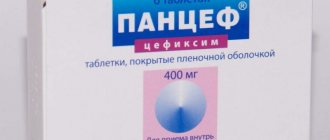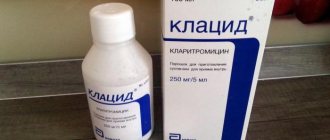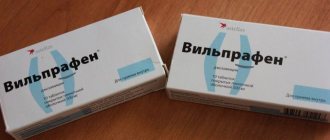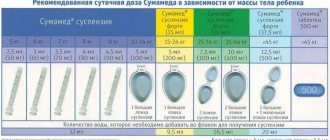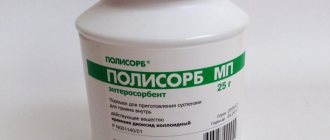Nexium (non-proprietary international name - esomeprazole) is a medication whose action is aimed at reducing the production of hydrochloric acid by the gastric glands.
Due to the suppression of secretory activity, the drug helps reduce acidity levels and is used in the complex treatment of various conditions associated with excessive acid secretion. The instructions for using Nexium or your attending physician will tell you how to take the drug and how to choose the right dose.
Application
A drug such as Nexium INN is available in the following forms:
- Pills of 20 mg and 40 mg.
- Granules, pellets 10 mg.
- Lyophilisate 40 mg. This form is used exclusively for injection.
Consequently, the drug “Nexium” has 2 main variations of use:
- Orally.
- Injections.
Nexium tablets are most often used, as this is the most familiar and convenient option. The rare use of pellets is explained by the fact that the composition contains a smaller amount of active substance. Typically, the drug in Nexium pills is used for children or patients who are unable to swallow a pill. The drug “lyophilisate” Nexium is used when it is impossible to take the drug orally.
The medication contains the active ingredient esomeprazole in different dosages. For example, Nexium tablets contain 20 mg-40 mg of the active ingredient, granules - 10 mg, and for injections - 40 mg in a bottle. Therefore, there is a possibility of encountering names such as “Nexium 40, 20 or 10 mg” and “Nexium powder”. This kind of terminology is unofficial, but quite widely used.
1 pill contains:
- Esomeprazole.
- Glycerol monostearate, hyprolose, hypromellose, dye (E172), cellulose, magnesium stearate, methacrylic-ethacrylic acid copolymer, paraffin, polysorbate, macrogol, crospovidone, titanium dioxide, talc, triethyl citrate.
1 package of granules contains almost the same amount of auxiliary components. Dextrose is added to this form.
The composition of 1 bottle of lyophilisate includes: esomeprazole, disodium edetate dihydrate, sodium hydroxide.
Nexium pills are delivered to pharmacies in packages that are equipped with a first-opening test. You can buy a package with 1, 2 or 4 blisters of 7 pills each. Pellets - granules in sachets (10 mg) are packaged in 10 or 28 pieces. For injections, a medicine such as Nexium is sold in 10 bottles per package.
Interesting! How to take Ultop: composition and analogues of the drug
Pellets or granules are yellowish or brown in color. The pills are oval-shaped with a pinkish color, on the front side there is the inscription “40 mg” or “20 mg”, depending on the amount of active ingredient, on the back side the letters “A/EI”. Lympholisate is presented as a white mass.
Important! The medication is released strictly according to prescription.
Price for Nexium in pharmacies
The approximate price for Nexium tablets with a dosage of 20 mg is 1431–1584 rubles (for a package of 14 pcs.) and 2557–2837 rubles (for a package of 28 pcs.). You can buy tablets with a dosage of 40 mg for 1797–1994 rubles (for a package of 14 pieces) or 3274–3588 rubles (for a package of 28 pieces).
Granules and pellets coated with an enteric coating are available for purchase for 1846–2049 rubles (packaging includes 28 packets). Lyophilisate for preparing a solution for intravenous administration will cost 5534–5710 rubles (package includes 10 bottles).
Therapeutic effect
This drug is designed to reduce the secretion of hydrochloric acid. This kind of effect is of considerable importance, since the need to reduce acidity is a key point in the treatment of many diseases. According to the mechanism of action, the drug is classified as a proton pump inhibitor.
A characteristic feature of the medicine is the ability to eliminate excessive acid production. The product begins to act 1 hour after administration.
It is worth noting that esomeprazole is not resistant to acidic environments. For this reason, in the manufacture of products of this group, the active components are encased in a shell that is not affected by the acidic environment.
Many patients have a question: how to take Nexium: before meals or after? It should be noted that after taking the pill, rapid absorption from the gastrointestinal tract is noted.
Experts note that if the drug is taken with food, then the absorption of the active substance will be significantly inhibited, but this has virtually no effect on the effectiveness of the drug. The summary states that taking the drug and food should be separated by approximately 30–60 minutes. Therefore, you need to take Nexium before meals or after meals with an interval of 30-60 minutes.
The use of the drug 40 mg per day for 4 weeks can cure gastroesophageal reflux disease in 78%. If treatment is extended to 8 weeks, the percentage of cured patients increases to 90.
The use of 20 mg of the drug in combination with antibiotics helps eliminate Helicobacter in 90% of patients after 2 weeks. In addition, patients who used Nexium during the treatment of gastric or duodenal ulcers should not take other auxiliary means for scarring the ulceration after completion of treatment.
special instructions
If any alarming signs appear (in the form of significant sudden weight loss, repeated vomiting, dysphagia, vomiting with blood), as well as in the presence of a stomach ulcer (or if it is suspected), it is necessary to exclude the presence of malignant neoplasms, since the use of Nexium can lead to smoothing out symptoms, which will delay diagnosis.
When undergoing long-term treatment (especially longer than a year), patients should undergo regular medical supervision.
In cases of using the drug “as needed,” you should inform your doctor about the appearance of atypical symptoms.
During therapy for the eradication of Helicobacter pylori, the possibility of drug interactions with all drugs used must be taken into account.
If there is a high risk of developing fractures or osteoporosis, patients should be under appropriate clinical supervision.
During therapy, care should be taken when driving, which is associated with the likelihood of developing side effects such as dizziness, drowsiness and blurred vision.
When is it appointed?
The drug Nexium and its indications for use will help get rid of symptoms and foci of inflammation. Nexium is prescribed for the treatment and prevention of a number of pathologies.
Interesting! Use of the drug Dexilant ???? for burning and esophagitis
These include:
- Gastroesophageal reflux disease.
- Stomach and duodenal ulcers.
- Stomach diseases arising from prolonged use of NSAIDs.
- Other diseases associated with increased secretion of hydrochloric acid.
GERD:
- Supportive measures for incurable esophagitis aimed at preventing exacerbation.
- Elimination of symptoms.
- Treatment of erosive GERD.
Peptic ulcer of the stomach and duodenum:
- Treatment of disease caused by Helicobacter.
- Relapse prevention.
Stomach pathologies that occurred in patients who took NSAIDs for a long time:
- Treatment of ulcerations caused by taking medications from the HBC group.
- Relapse prevention.
Indications for use of lyophilisate:
- GERD combined with esophagitis.
- Scarring and prevention of peptic ulcers.
- Preventing blood loss from a peptic ulcer.
Important! Lyophilisate Nexium for children is prescribed from 1 year.
Contraindications
Nexium has contraindications that must be taken into account. The product does not need to be used:
- For congenital fructose intolerance.
- Up to 12 years old.
- After 12 years of age, it can be used only if you have GERD.
- With increased sensitivity to components.
Nexium should be replaced with its analogue in the following situations:
- Hypersensitivity to the active substance.
- Kidney diseases.
- GW period and pregnancy.
Directions for use and dosage
Before you start taking it, you should familiarize yourself with the drug Nexium and its instructions for use. The medication is intended for oral administration before or after meals. The medicine should be swallowed whole with plenty of water.
Important! It is prohibited to crush or chew the medicine.
For patients who have difficulty swallowing, the medication can be diluted in 0.5 tbsp. liquids. For patients who are not at all able to swallow pills, administration is carried out by a nasogastric tube.
Pellets and granules are used orally. To take 10 mg of the product, you need to dilute 1 packet in 15 ml of liquid. Patients taking 20 mg of the drug will need to dissolve 2 packets in 30 ml of liquid.
The lyophilisate is intended for injection and infusion. The dosage and frequency of use are determined by the doctor.
Overdose
Today, there are references to isolated cases of intentional overdose. Oral ingestion of esomeprazole at a dose of 280 mg was accompanied by unpleasant gastrointestinal symptoms and general weakness. A single dose of 80 mg of the drug did not lead to any negative consequences.
An antidote for esomeprazole has not yet been found. Dialysis is not very effective due to the high binding of the active component of Nexium to plasma proteins. If necessary, symptomatic and general supportive therapy is prescribed.
Negative influence
Nexium has side effects that should be taken into account during therapy.
Side effects of Nexium are as follows:
- CNS. The drug often causes migraines. A taste disorder may also occur. Sometimes there is lethargy and dizziness.
- Bronchospasm may occur at times.
- From the gastrointestinal tract, nausea, vomiting, pain in the abdominal cavity, bloating, and upset stool may be observed.
- A reaction to the drug may include irritation, dermatitis, and rash.
- Vision may be impaired.
- General distress: severe sweating, malaise.
Interesting! Causes of a lump in the throat after eating and accompanying symptoms
Signs of overdose: weakness and upset of the digestive system.
Side effects
- Nervous system: often – headache; uncommon – paresthesia, dizziness, drowsiness; rarely - taste disturbance;
- Musculoskeletal system: rarely – myalgia, arthralgia; very rarely - muscle weakness;
- Hematopoietic system: rarely – leukopenia, thrombocytopenia; very rarely - pancytopenia, agranulocytosis;
- Urinary system: very rarely – interstitial nephritis;
- Respiratory system: rarely – bronchospasm;
- Gastrointestinal tract: often – constipation, abdominal pain, diarrhea, flatulence, vomiting/nausea; uncommon – dry mouth; rarely – candidiasis of the gastrointestinal tract, stomatitis; very rarely - microscopic colitis confirmed by histological studies;
- Skin and subcutaneous tissues: often - reactions at the injection site (with intravenous administration); uncommon – dermatitis, rash, itching, urticaria; rarely – photosensitivity, alopecia; very rarely - toxic epidermal necrolysis, Stevens-Johnson syndrome, erythema multiforme;
- Mammary glands and reproductive system: very rarely - gynecomastia;
- Liver and biliary tract: uncommon – increased activity of liver enzymes; rarely - hepatitis (accompanied by or without jaundice); very rarely - liver failure, encephalopathy in patients with liver disease;
- Organ of vision: rarely – blurred vision;
- Mental disorders: infrequently – insomnia; rarely – agitation, depression, confusion; very rarely - aggressive behavior, hallucinations;
- Metabolism: rarely – hyponatremia; very rarely - hypomagnesemia, hypocalcemia (associated with severe hypomagnesemia), hypokalemia (caused by hypomagnesemia);
- Allergic reactions: rarely – hypersensitivity reactions (in the form of fever, angioedema, anaphylactic reactions/anaphylactic shock);
- Other: infrequently - peripheral edema; rarely – sweating, malaise.
When Nexium is administered intravenously to patients in critical condition, especially when administered in high doses, irreversible visual impairment may develop (a cause-and-effect relationship with therapy has not been established).
During pregnancy
Particular attention should be paid to the fact that it is undesirable to prescribe Nexium during pregnancy, since there is no verified information about its effect on the woman’s body during this period. There is also no information about whether the drug passes into mother's milk. Therefore, the medicine should not be used during breastfeeding either.
Drug interactions
When Nexium is used simultaneously with certain medications, the following effects may occur:
- Ketoconazole, itraconazole, erlotinib: decreased absorption;
- Digoxin: increasing its absorption;
- Antiretroviral drugs (atazanavir, nelfinavir): decrease in their concentration in serum (the combination is not recommended);
- Saquinavir: increase in its concentration in serum;
- Citalopram, diazepam, imipramine, phenytoin, clomipramine and other drugs in the metabolism of which the CYP2C19 isoenzyme takes part: increasing their concentration in plasma;
- Phenytoin: increased residual concentration in patients with epilepsy;
- Tacrolimus, methotrexate: increase in its concentration in blood serum;
- Preparations of St. John's wort, rifampicin: a decrease in the concentration of esomeprazole in the blood plasma.
Analogs
Help for people with acid-dependent pathologies was the release of the drug Emanera. Despite the fact that Nexium analogues may contain different active ingredients, this analogue contains esomeprazole. Therefore, this analogue is considered an excellent replacement for Nexium. Emenera is produced in film-coated capsules. The product has the same indications for use as Nexium.
Photos, videos and reviews about the effect of this analogue on the body can be viewed on the Runet. It should be noted that reviews about this medication are different, for example, “I didn’t like Emanera. It doesn’t relieve the burning sensation, I also drink Gaviscon.”
Important! Patients taking the drug for a long time must undergo timely consultations, since a large dosage of the drug can significantly increase the risk of fractures.
Emaner contains sucrose, as a result of which the drug is contraindicated in patients with fructose intolerance.
The effectiveness of any acid-blocking drug is determined primarily by the genetic characteristics of the patient and the list of medications used. You should not select medications for treatment on your own. The wrong choice of drug or the wrong dosage can have a detrimental effect on your health. The purpose of the drug and its dosage should be selected individually based on examination and examination.

